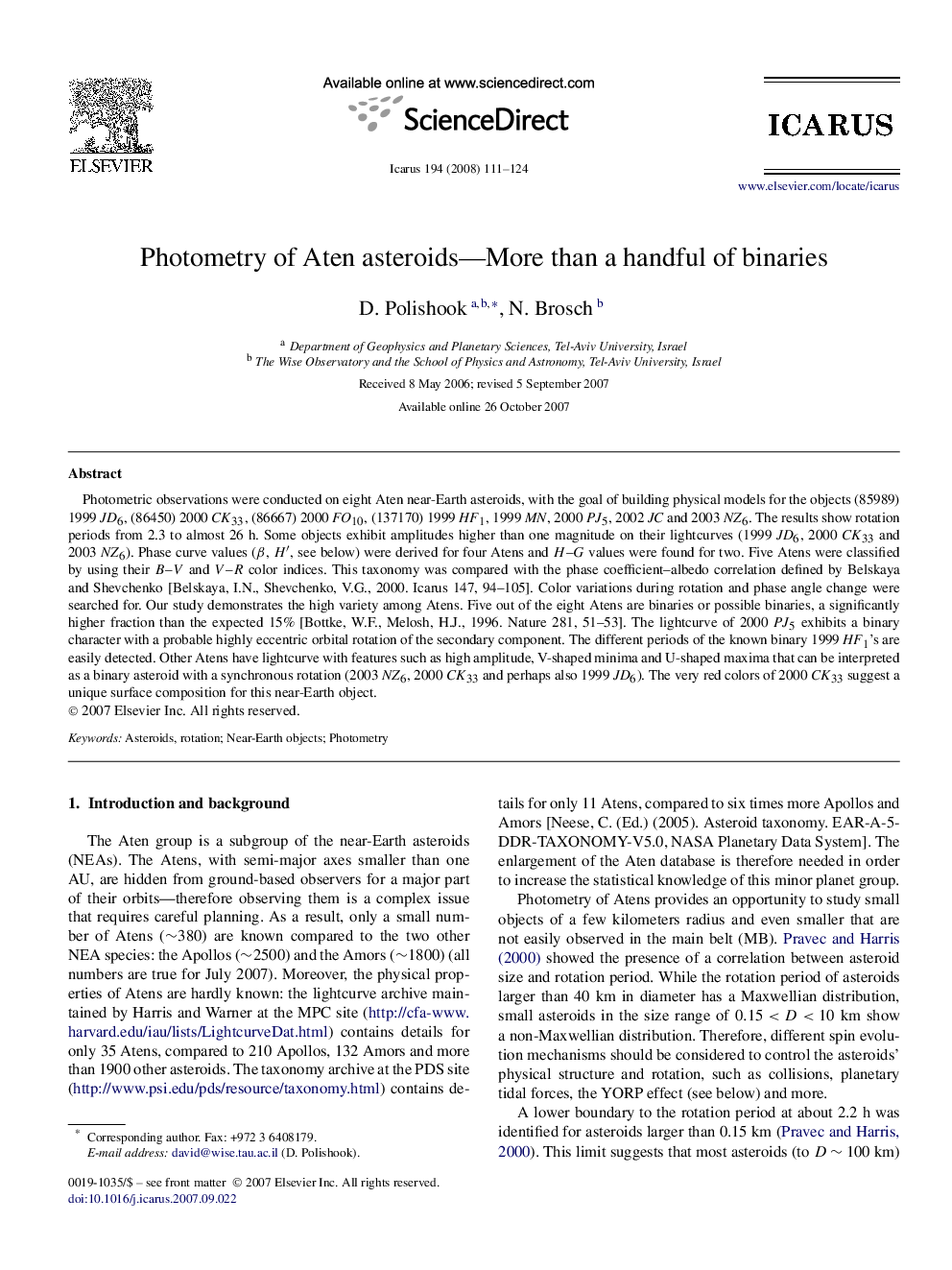| Article ID | Journal | Published Year | Pages | File Type |
|---|---|---|---|---|
| 1774926 | Icarus | 2008 | 14 Pages |
Photometric observations were conducted on eight Aten near-Earth asteroids, with the goal of building physical models for the objects (85989) 1999 JD6JD6, (86450) 2000 CK33CK33, (86667) 2000 FO10FO10, (137170) 1999 HF1HF1, 1999 MN , 2000 PJ5PJ5, 2002 JC and 2003 NZ6NZ6. The results show rotation periods from 2.3 to almost 26 h. Some objects exhibit amplitudes higher than one magnitude on their lightcurves (1999 JD6JD6, 2000 CK33CK33 and 2003 NZ6NZ6). Phase curve values (β , H′H′, see below) were derived for four Atens and H–GH–G values were found for two. Five Atens were classified by using their B–VB–V and V–RV–R color indices. This taxonomy was compared with the phase coefficient–albedo correlation defined by Belskaya and Shevchenko [Belskaya, I.N., Shevchenko, V.G., 2000. Icarus 147, 94–105]. Color variations during rotation and phase angle change were searched for. Our study demonstrates the high variety among Atens. Five out of the eight Atens are binaries or possible binaries, a significantly higher fraction than the expected 15% [Bottke, W.F., Melosh, H.J., 1996. Nature 281, 51–53]. The lightcurve of 2000 PJ5PJ5 exhibits a binary character with a probable highly eccentric orbital rotation of the secondary component. The different periods of the known binary 1999 HF1HF1's are easily detected. Other Atens have lightcurve with features such as high amplitude, V-shaped minima and U-shaped maxima that can be interpreted as a binary asteroid with a synchronous rotation (2003 NZ6NZ6, 2000 CK33CK33 and perhaps also 1999 JD6JD6). The very red colors of 2000 CK33CK33 suggest a unique surface composition for this near-Earth object.
